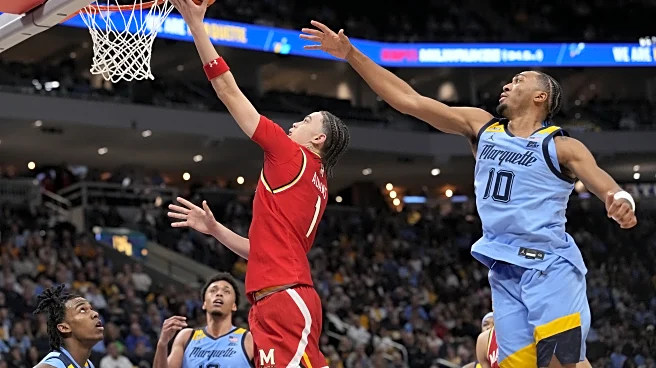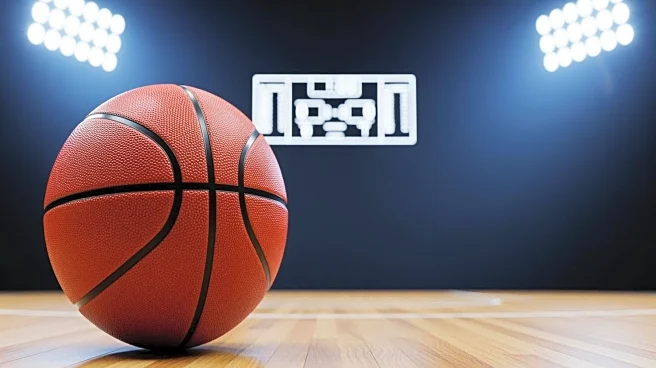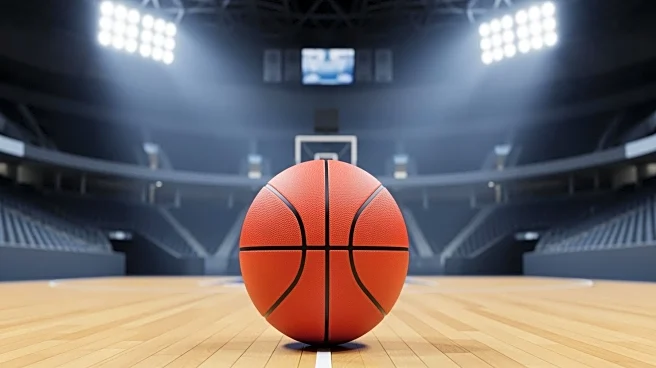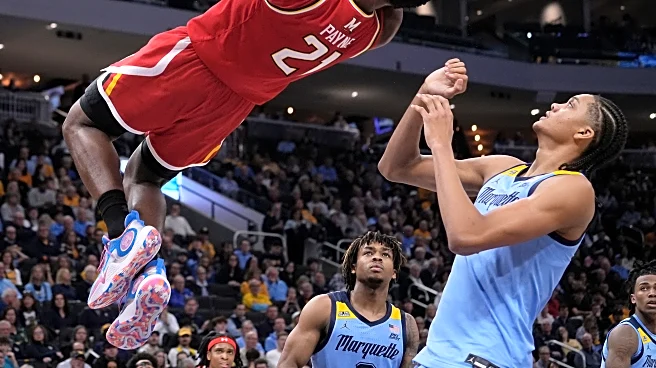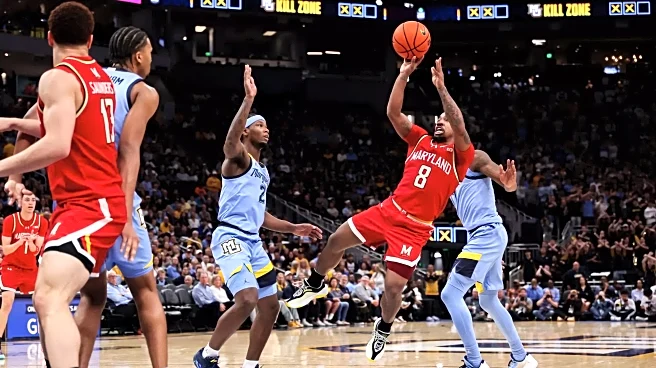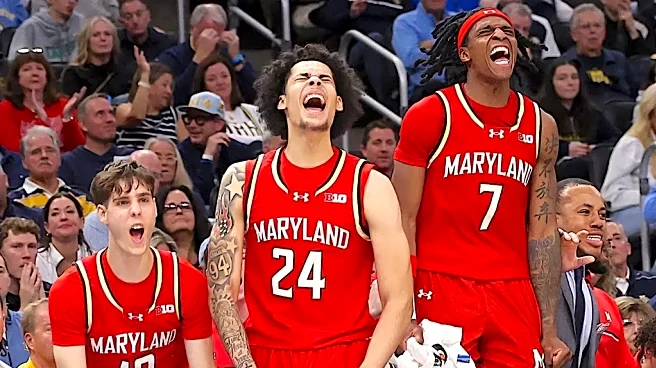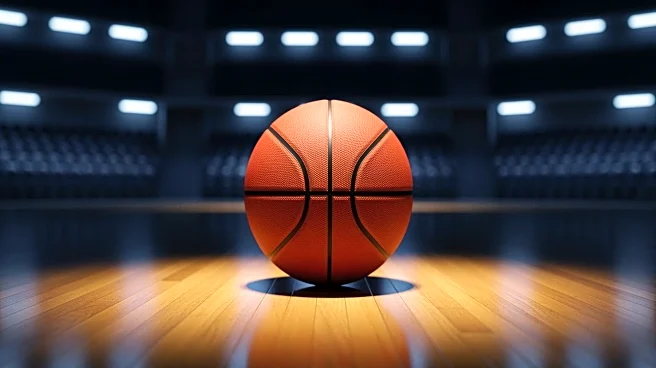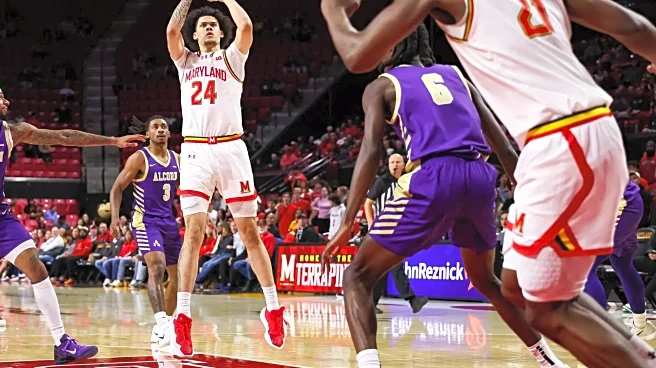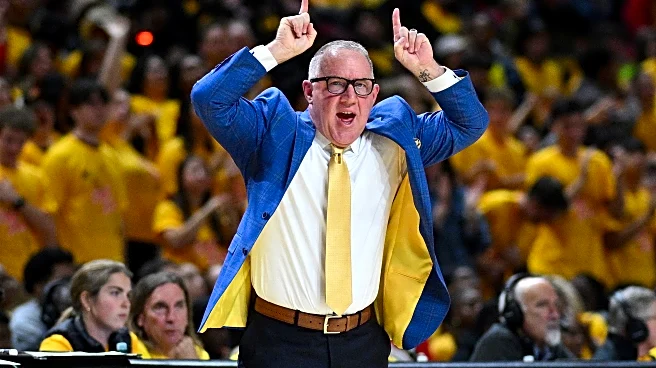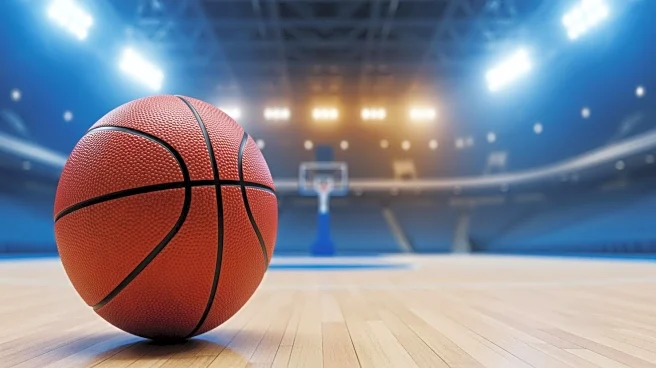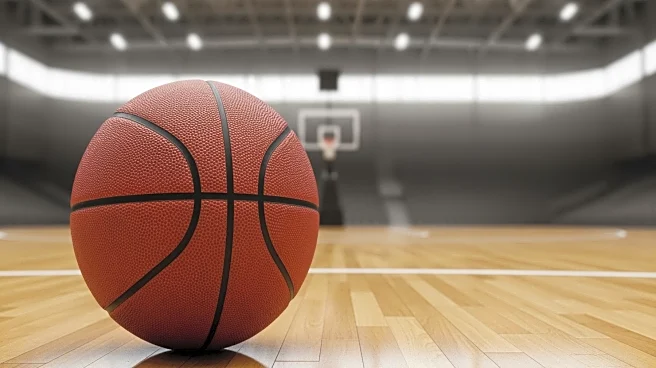What's Happening?
Pharrel Payne, a senior basketball player for Maryland, experienced a severe injury during a game against Marquette. Payne, who has been performing well this season, attempted a powerful dunk but landed awkwardly, causing his right leg to twist in an unnatural
direction. Following the incident, Payne was taken to the hospital, and there is currently no update on his condition. The injury has raised concerns about his ability to continue playing this season, as it appears to be significant.
Why It's Important?
The injury to Pharrel Payne is significant for Maryland's basketball team, as he has been a key player this season. His absence could impact the team's performance in upcoming games, potentially affecting their standings in the Big Ten conference. Additionally, injuries like Payne's highlight the physical risks athletes face, prompting discussions on player safety and the need for effective medical support during games. The incident may also influence the team's strategy and lineup adjustments moving forward.
What's Next?
The next steps involve monitoring Payne's recovery and assessing the extent of his injury. Maryland's coaching staff will likely need to make strategic adjustments to compensate for his absence, depending on the duration of his recovery. The team's medical staff will focus on providing the necessary treatment and rehabilitation to ensure Payne's health and potential return to the court. Fans and stakeholders will be watching closely for updates on his condition and the team's performance in his absence.
Beyond the Headlines
This incident underscores the importance of athlete safety and the potential long-term impacts of sports injuries. It may lead to increased scrutiny on training practices and the adequacy of medical facilities available during games. Additionally, it could spark conversations about the pressures athletes face to perform, sometimes leading to risky plays that result in injury. The cultural and ethical dimensions of sports injuries may be explored further as stakeholders seek to balance competitive success with player well-being.


